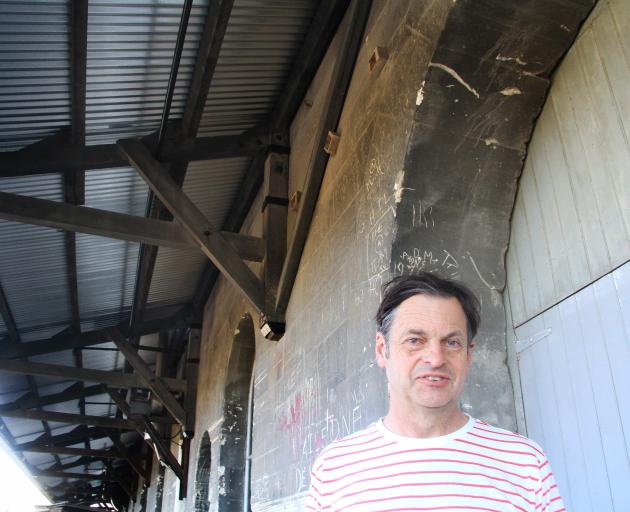
Trust deputy chairman Graeme Clark said with trust restoration officer John Baster’s devotion to the buildings and their history that "with all due respect to contractors", an in-house specialist was better for the trust.
He too had worked on the trust’s buildings, and the buildings "ooze history".
"We can be way up on a beam somewhere, you’ll see people’s initials, and you’ll see measurements, and maybe tallies of bales and bags and things and it kind of makes you feel quite privileged to be working on these kinds of things," Mr Clark said.
"John understands these buildings, and he ‘lives’ them — it’s extremely important to have someone like John on board. He’s very good — he will pick up things that none of us would have."
Mr Baster had been involved with the trust for years, but said "I haven’t really been cut loose in this way before."
After the position of restoration officer was created early this year, Mr Baster and his co-worker Malcolm Tyson had completed smaller projects in Harbour St, but the restoration of the canopy of the former railway siding structure with the approval of Heritage New Zealand and the Waitaki District Council, using "as much of the original material as possible", had reinforced his view that the systems and machinery in use during the Loan and Merc’s early years would have been "cutting-edge technology in its day".
The canopy, part of the town’s early agricultural history, was cantilevered off the building, and sheltered a weigh station for the railway cars that transported goods out to the wharf.
"It’s really clever, the guys who built this stuff; they kind of thought outside the square," Mr Baster said.
"A lot of people don’t realise these buildings are not just buildings, they’re actually machines."
A trust statement notes the iron roof on the railway canopy of the Loan and Merc was removed earlier this year upon the discovery of asbestos, and when outsourcing the project was considered it was quoted at more than $65,000 — as an in-house project it came in under budget at about $29,000.
Future projects for the building include window restoration and the installation of a goods lift for access to the second and third floors, the statement says.












